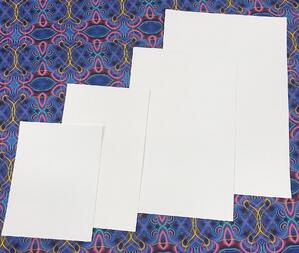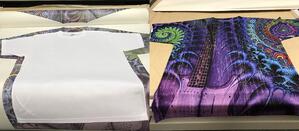 You’ve spent countless hours at trade shows and online examining expensive equipment, looking at various RIP options, determining whether you need calendars or flat presses — and which one(s) — for transfer equipment, and specifying substrates in order to get the best dye sublimation output for your particular application. Choosing a dye sublimation paper to optimize the effectiveness of your application can make or break you.
You’ve spent countless hours at trade shows and online examining expensive equipment, looking at various RIP options, determining whether you need calendars or flat presses — and which one(s) — for transfer equipment, and specifying substrates in order to get the best dye sublimation output for your particular application. Choosing a dye sublimation paper to optimize the effectiveness of your application can make or break you.
Raw papers vary in pulp particle size, density and uniformity, which will affect dot gain on the paper, absorption and adsorption of ink on the paper, and will of course affect the proper and uniform release of dye during transfer.
The coatings on sublimation papers are the secret sauce of getting predictable and reliable results every time, and integral to each part of the process. We all understand that everyone wants predictable and repeatable sublimation results, which is why uncoated papers are not recommended.
 Picking a suitable coated dye sublimation paper does not have to be difficult. There are some basic types of coatings with advantages and disadvantages that help determine proper application for your product line, and there are a range of bias weights (thicknesses) of paper that can affect cost, waste and production times.
Picking a suitable coated dye sublimation paper does not have to be difficult. There are some basic types of coatings with advantages and disadvantages that help determine proper application for your product line, and there are a range of bias weights (thicknesses) of paper that can affect cost, waste and production times.
How, and through whom, you purchase coated paper will also affect your costs. Finally, there are growing environmental concerns around how and where the paper is made and how and where the coating is applied.
These are just some of the factors to consider when shopping for coated dye sublimation paper. We've addressed these items to help equip individuals of all experience levels in dye sublimation with the information for asking the right questions. Read more.
Looking for a hands-on learning experience? Register for SGIA's Operation Sublimation for Wide-Format Graphics workshop.